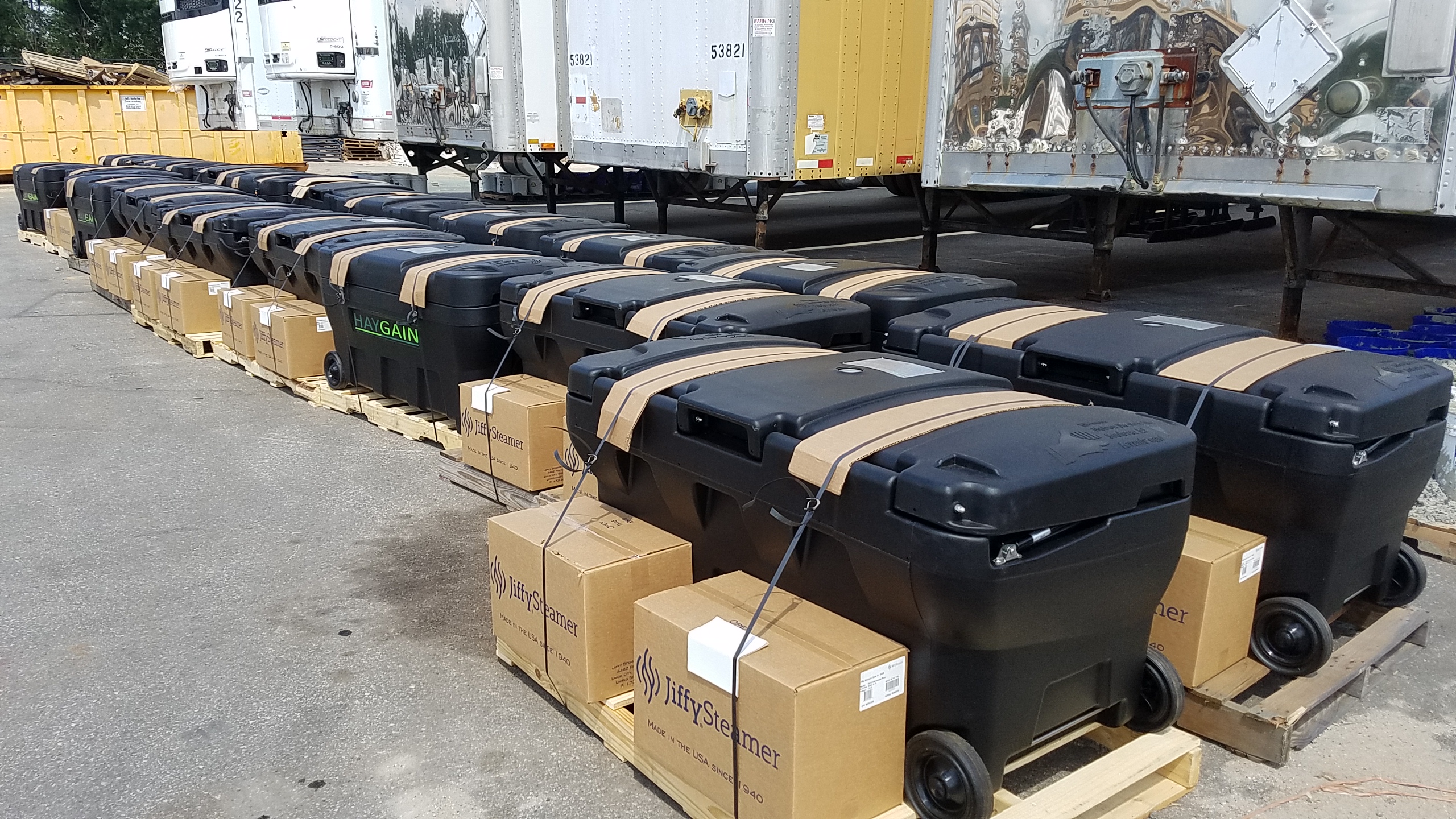
23 May 2020 Full steam ahead!
Dipping or soaking your horse’s hay conjures visions of wasted water, contaminated liquid, and squandered effort.
A European study conducted in 2013 and 2014 explored the efficacy and medical benefits of steaming hay. The study by doctors Julie Dauvillier and Emmanuelle van Erck-Westergen examined four hundred and eighty-two horses. All horses were referred to the study because of poor performance or respiratory issues and were scoped. Case histories and results were recorded.
“A horse can have a serious problem with their respiratory system without having obvious symptoms. The horse can have lower airway inflammation and not necessarily have a cough, nasal discharge, or heavy breathing,” notes Van Erck-Westergren.
Inflammation in respiratory airways can be due to dust, allergens, bacteria, mold, or fungal spores present in a horse’s forage. Particles settle in the windpipe or tissues, constricting unrestricted airflow between a horse’s nose and lungs. The irritation can lead to respiratory diseases like IAD.
The study, conducted in 2013 and 2014, found that eighty-four percent of the horses suffered from inflammatory airway disease (IAD). Seventy-two percent of horses presented different types of fungi in the airways. According to researchers, steamed hay decreased the risk of IAD by sixty-three percent. The protocol eliminated aggravating allergens, dust, and other particles by ninety-eight percent.
The results of the study were presented at the American College of Veterinary Internal Medicine in June 2016.
Improving a horse’s respiratory health is not the only reason why steaming hay is gaining popularity. The founders of the company, Haygain®, claim steaming hay removes airway irritants while preserving nutrients, ridding feed of bacteria.
In consort with Professor Meriel Moore-Colyer of the Royal Agriculture University in Cirencester, England, additional studies examined the effect of steam treatment on bacteria, fungi, and mold concentrations, respirable particle type, and content, airway response of recurrent airway obstruction in horses, nutrient content, and length of the steam protocol.
Among the findings, steaming hay decimated the bacterial load in tested forage by nine-nine percent. Forage steamed for fifty minutes retained all minerals. Diet reduction of non-structural carbohydrates in forage benefited insulin-resistant horses. When offered dry, soaked, or steamed hay, horses preferred the forage steamed in a Haygain steamer.
The patented Haygain steamer incorporates a perforated spike system that distributes steam evenly from within a thermally insulated chest. The critical high temperature of upwards of one degree Fahrenheit is maintained even in freezing conditions. Steamer sizes vary to accommodate one full hay bag to the largest one to hold a bale to feed four horses.
Moore-Colyer developed her interest in researching the steaming hay method early in her research career. “I have always been interested in forage quality for horses and started my research career looking at the effect of soaking and steaming on respirable particles and nutrient content.”
In 2006, Moore-Colyer accepted a part-time post at Royal Agricultural University and soon was approached by Brian Fillery and Tim Oliver, who later became directors of Haygain, to help develop a hay steamer.
While the Haygain steamer is widely recognized in Europe, traction and interest in the steaming approach soared at the World Equestrian Games in Tyron, North Carolina. Twenty-two, three-hundred-pound steamers to accommodate two hundred horses were shipped to Tyron in advance of the opening ceremonies. The number of products swelled to thirty-five or more by the end of the competition’s first week. Steamer requests soared for both individual and team competitors as word spread.
Moore-Colyer and Haygain organize presentations all over Europe to discuss the benefits of steaming. “The steamers are easy to use, and it is just a matter of incorporating them into a daily stable management routine.”

